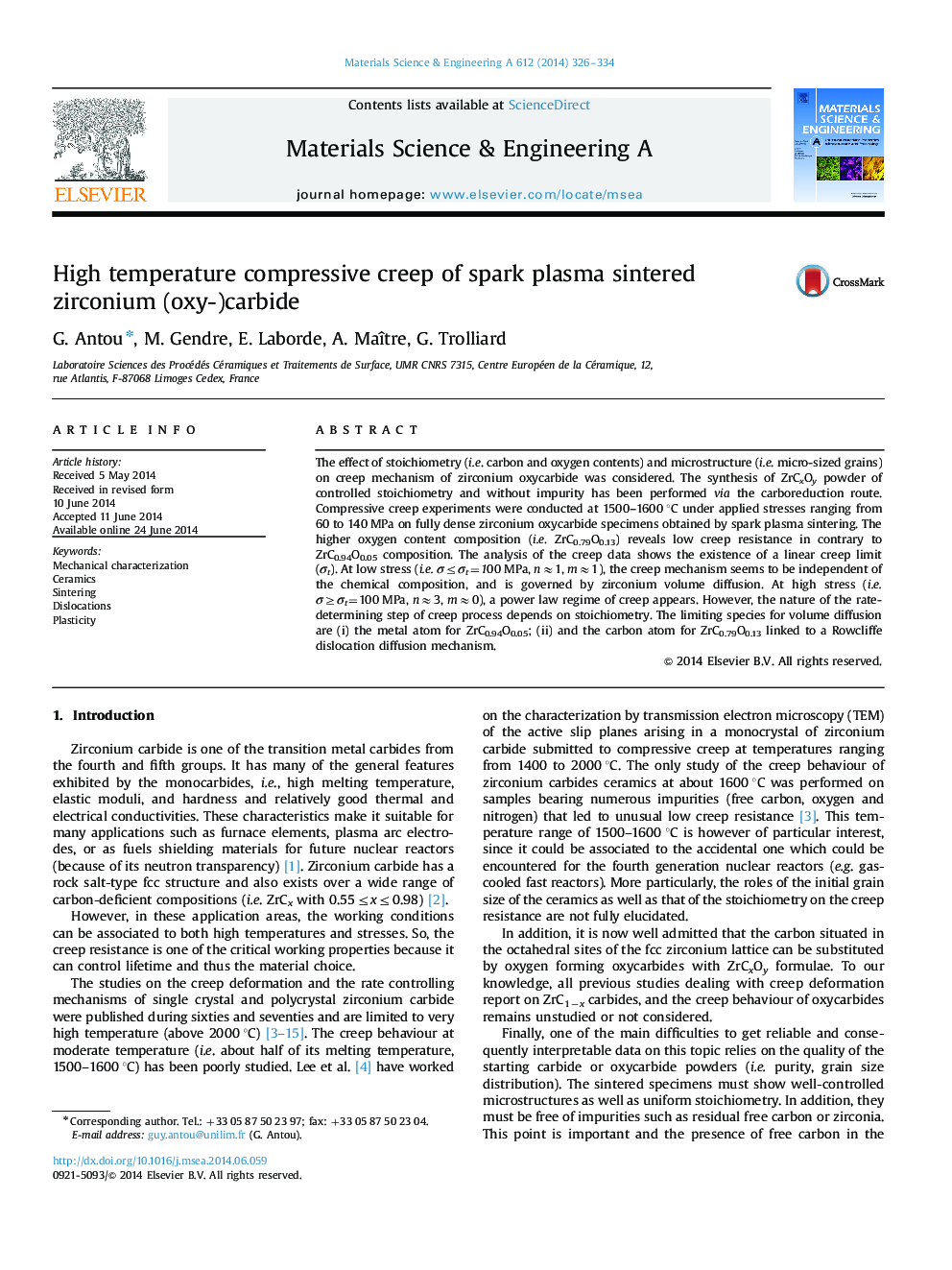| Article ID | Journal | Published Year | Pages | File Type |
|---|---|---|---|---|
| 7980872 | Materials Science and Engineering: A | 2014 | 9 Pages |
Abstract
The effect of stoichiometry (i.e. carbon and oxygen contents) and microstructure (i.e. micro-sized grains) on creep mechanism of zirconium oxycarbide was considered. The synthesis of ZrCxOy powder of controlled stoichiometry and without impurity has been performed via the carboreduction route. Compressive creep experiments were conducted at 1500-1600 °C under applied stresses ranging from 60 to 140 MPa on fully dense zirconium oxycarbide specimens obtained by spark plasma sintering. The higher oxygen content composition (i.e. ZrC0.79O0.13) reveals low creep resistance in contrary to ZrC0.94O0.05 composition. The analysis of the creep data shows the existence of a linear creep limit (Ït). At low stress (i.e. Ïâ¤Ït=100 MPa, nâ1, mâ1), the creep mechanism seems to be independent of the chemical composition, and is governed by zirconium volume diffusion. At high stress (i.e. Ïâ¥Ït=100 MPa, nâ3, mâ0), a power law regime of creep appears. However, the nature of the rate-determining step of creep process depends on stoichiometry. The limiting species for volume diffusion are (i) the metal atom for ZrC0.94O0.05; (ii) and the carbon atom for ZrC0.79O0.13 linked to a Rowcliffe dislocation diffusion mechanism.
Related Topics
Physical Sciences and Engineering
Materials Science
Materials Science (General)
Authors
G. Antou, M. Gendre, E. Laborde, A. Maître, G. Trolliard,
